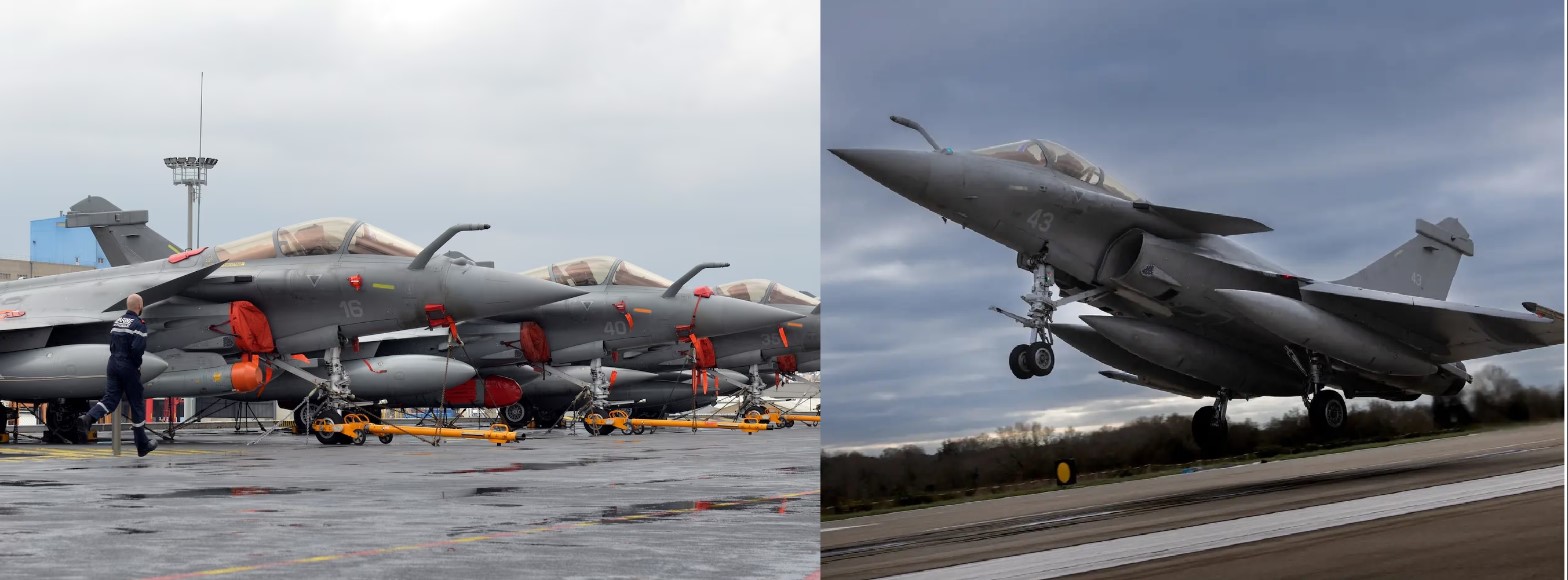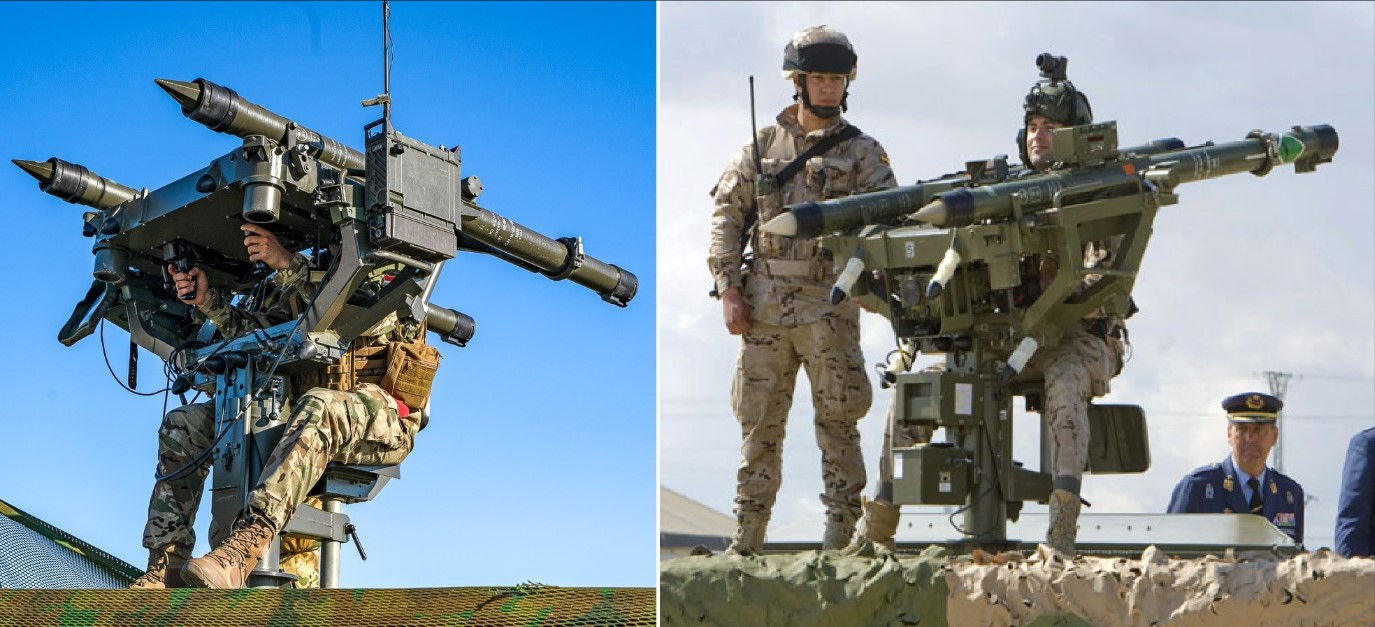France Hands Over Three More Rafales to Egypt in Major 2021 Defense Deal

France has quietly delivered another batch of Rafale fighters to Egypt, strengthening Cairo’s fast-growing combat fleet. The three aircraft — newly manufactured and designated EM12, EM13, and EM14 — slipped into an Egyptian air base with pristine factory markings, signaling a low-profile but significant boost to the country’s air-modernization plans.
Their arrival, revealed on November 26, 2025 by the International Defence Analysis monitoring group, marks another step toward fulfilling the 30-jet Rafale contract signed in 2021, a deal worth €3.75 billion (about US$4.5 billion). With each discreet delivery, France brings Egypt closer to completing one of its most important recent aircraft acquisitions, while Cairo continues to reshape its airpower for long-range, high-intensity operations.
A Strategic Delivery Amid Quiet Diplomacy
The newly built aircraft were spotted landing at an Egyptian air base with fresh factory markings, confirming their direct transfer from France. Egyptian officials have not made a public statement, consistent with Cairo’s pattern of maintaining a low profile around high-value defense arrivals.
Defense analysts note that this steady stream of Rafale deliveries underscores Egypt’s broader strategy: strengthen tactical aviation capabilities, diversify defense suppliers, and ensure operational independence in contested theaters.
The 2021 Rafale contract — Egypt’s second major purchase of the type after the initial 24-jet deal signed in 2015 — is expected to be fully completed by late 2026, depending on production and handover timelines set by Dassault Aviation and French authorities.
Transforming Egypt’s Airpower Across Regions
The Rafale has reshaped the Egyptian Air Force’s operational reach. With long-range strike capability, advanced electronic warfare suites, and NATO-standard interoperability, the aircraft provides Cairo with strategic flexibility across both North Africa and the Eastern Mediterranean.
Military observers note that Egypt’s Rafales often train in complex mission sets including maritime strike, long-range interdiction, precision ground attack, air superiority missions, and ISR (intelligence, surveillance, and reconnaissance). The Rafale’s omnirole capability has allowed Egypt to gradually reduce reliance on legacy fleets composed of F-16s, MiG-29M/M2s, and Mirage 2000-series jets.
Current EAF Fleet: A Diverse Mix with Growing Modernisation
As of 2025, the Egyptian Air Force operates roughly 1,065 to 1,092 aircraft overall — including fighters, helicopters, transport planes, trainers and special-mission platforms.
Combat-ready fighters and multirole jets — including the Rafale — make up a substantial portion of that strength.
Key assets of the EAF’s fixed-wing and rotary-aircraft fleet include:
-
Over 210–220 Lockheed Martin F-16 Fighting Falcon multirole jets — historically the backbone of the EAF’s combat force.
-
The Rafale fleet: with the new batch, Egypt now operates around 54 Rafales — combining the original 24-jet deal from 2015 with the 2021 order under delivery.
-
Russian-origin jets like Mikoyan MiG-29M/M2 — around 43–46 in service — maintaining a legacy of Soviet-era procurement and providing alternative platforms alongside Western ones.
-
Older French jets: for example Dassault Mirage 2000 — about 19 still operational — though their numbers are gradually being phased down as modernization advances.
-
A wide variety of helicopters, transport aircraft, trainers, UAVs, and support platforms contributing to EAF’s overall reach and multi-domain flexibility.
This diversity — mixing American, French, Russian, and other-origin aircraft — reflects a long-term procurement approach aimed at supplier diversification, minimizing dependence on any single foreign partner, and preserving strategic autonomy.
Regional Trend: Gulf States Also Turning to Rafale
Egypt’s acquisition is part of a wider regional pivot toward Dassault’s flagship fighter.
Qatar ordered 36 Rafales, all delivered by 2023, while the United Arab Emirates signed a landmark contract in December 2021 for 80 Rafale F4 aircraft — worth €16–17 billion, the largest Rafale export deal to date.
These Gulf acquisitions highlight the region’s transition away from aging F-16s, Mirage 2000s, and MiG-29 models toward modern, network-ready, multi-role fighters.
A Modernization Path Set to Continue
With the latest delivery, Egypt now possesses a significantly expanded Rafale fleet — improving mission readiness, deterrence, and regional strike capability. As Dassault continues production, Cairo is expected to receive the remaining jets throughout 2026, completing one of the most consequential defense deals in the Middle East.
The continued flow of aircraft — without formal announcements — signals Egypt’s ongoing effort to quietly but steadily build one of the region’s most advanced and diversified air forces.
✍️ This article is written by the team of The Defense News.





